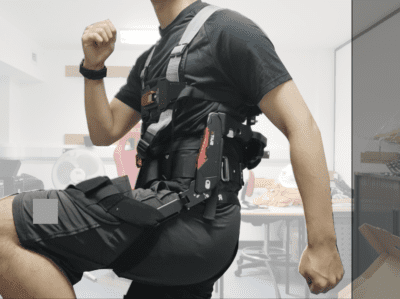
Final Project
The effect of passive trunk exoskeleton on the relationship between Metabolic Rate and Lifting Load
This study evaluated the effect of a BackX exoskeleton (BSE) on metabolic rate (MR) at different lifting techniques (LT) and lifting loads (LL), investigating the effect of the BackX on MR and its relationship with LL and LT. This study recruited 17 Chinese subjects (all 17 were male) from college students by snowball sampling. The picture shows the lifting task flow of the subjects throughout the experiment.
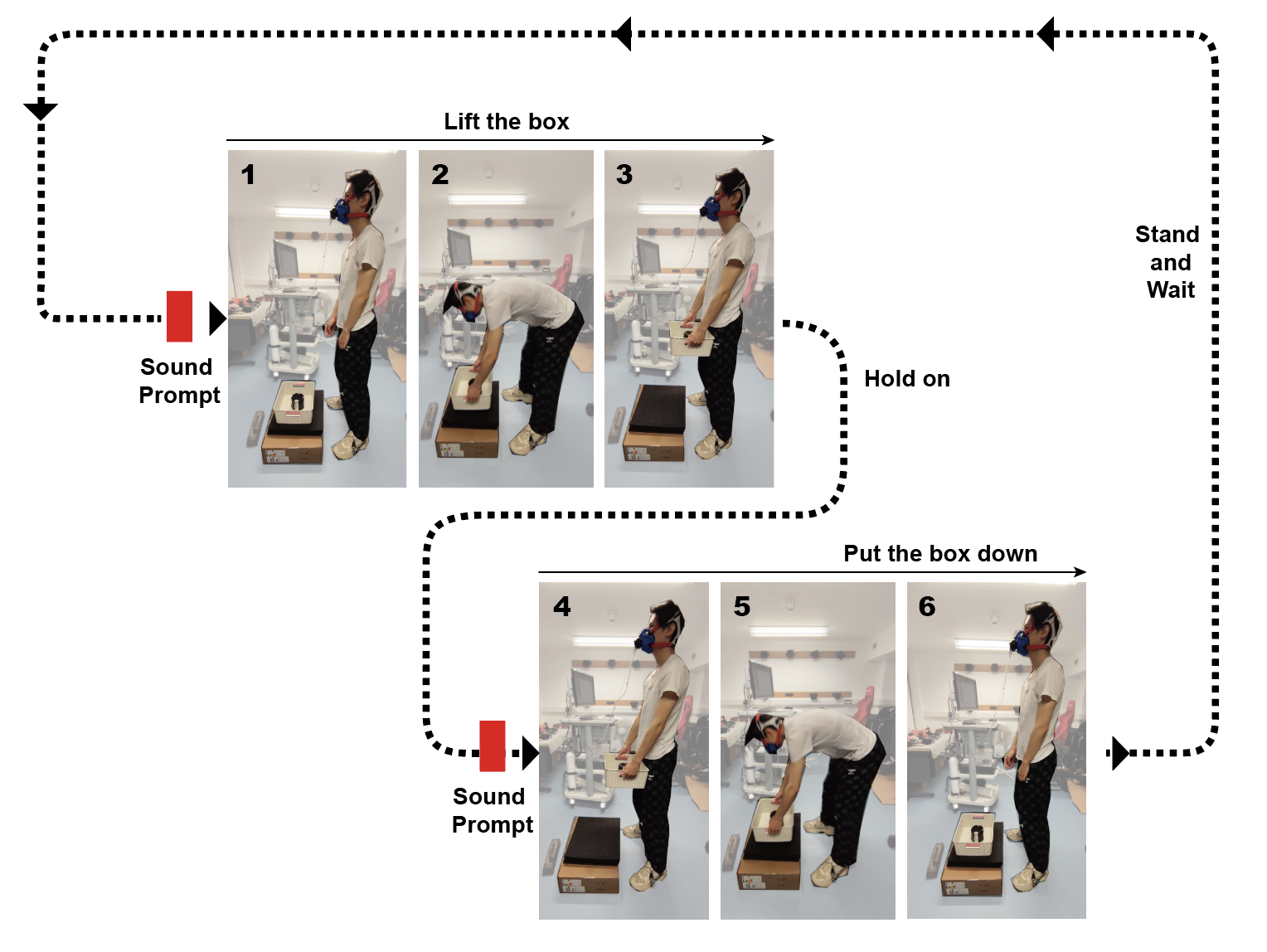
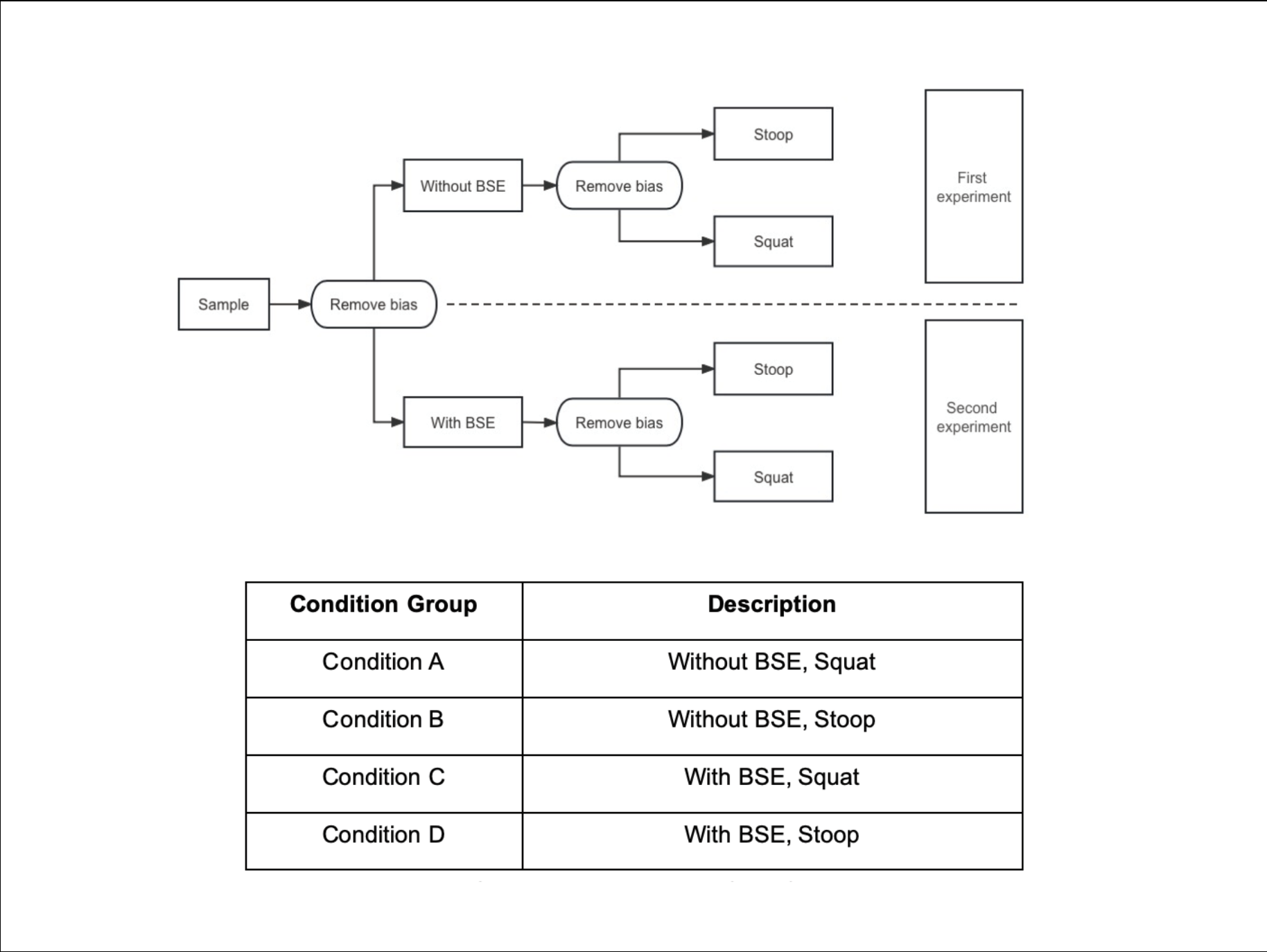
Study Design
A 2 × 2 design was implemented in this study, with 12 total lifting tasks for each of four conditions (Without BSE Squat, Without BSE Stoop, With BSE Squat, With BSE Stoop) each participant was exposed to three sets of Lifting Load (5Kg, 10Kg, 15Kg).
Considering the experimental intensity, experimental duration, and fatigue accumulation, subjects were required to complete the entire experimental task on two non-consecutive days. Each experiment required 6 lifting tasks (2 Conditions * 3 Weights), and the duration of each experiment was limited in 1.5 hours.
Lifting Task Design
Metabolic rate was determined by indirect calorimetry using a respiratory gas analysis system (Cosmed srl, Quark CPET, Rome, Italy). Subject was required to wear the Face Mark and Heart Rate Monitor for the full study.
Subjects were instructed by a metronome to perform a repetitive lifting task in which they were asked to lift and lower the Box at a rate of 6 cycle/min. Each Cycle consists of picking up the box, maintaining an upright position, putting down the box, and maintaining an upright position again. Each lifting task lasted 5 min, and after completing the task, subjects were required to sit in a chair for 5 min to rest and complete the subjective questionnaire during this time. 5 min of rest was immediately followed by the next lifting task with different LL, and so on until all 3 lifting tasks were completed in one condition.
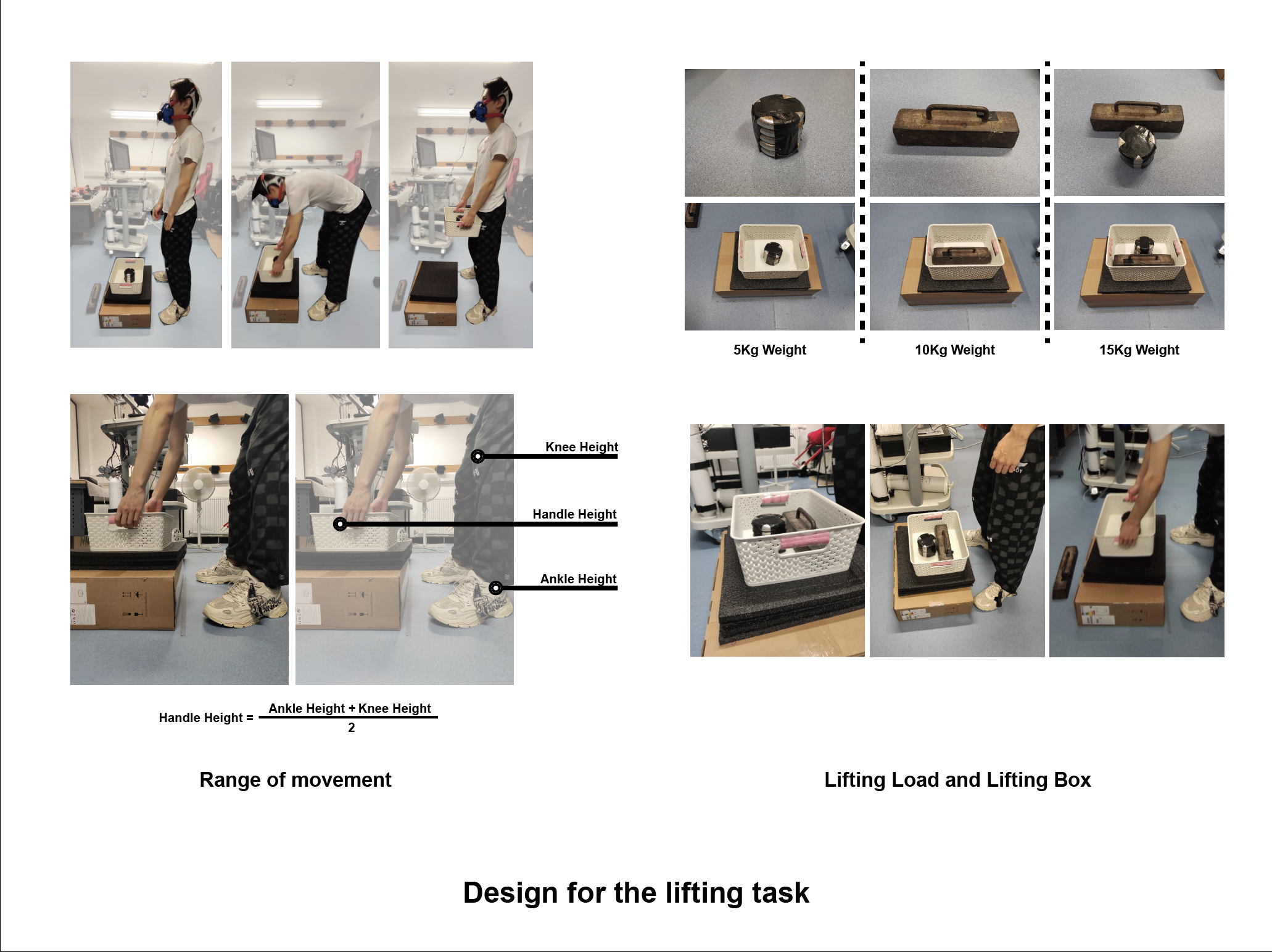
Data Analysis
The study was statistically analysed using SPSS. Normal distribution was verified using The Shapiro-Wilk normality test. As this study was conducted only to compare between the same variables. We used One-way ANOVA to test the effect of LL (three levels: 5Kg, 10Kg, 15Kg) on MR in each of the four conditions.Since the LT (Squat Lifting, Stoop Lifting) and BSE (Without BSE, With BSE) were Paired Groups, the effects of LT on MR and the effects of BSE on MR were tested separately using either the Paired sample T-test or the non-parametric Wilcoxon signed-rank test to investigate their differences.
For EffectBSE (Squat condition, Stoop condition), the correlation between EffectBSE and LL was studied using Bivariate Pearson correlation. When correlation was observed a linear regression analysis was performed.
This picture shows part of the collection of raw data and part of the subjective questionnaire

Result
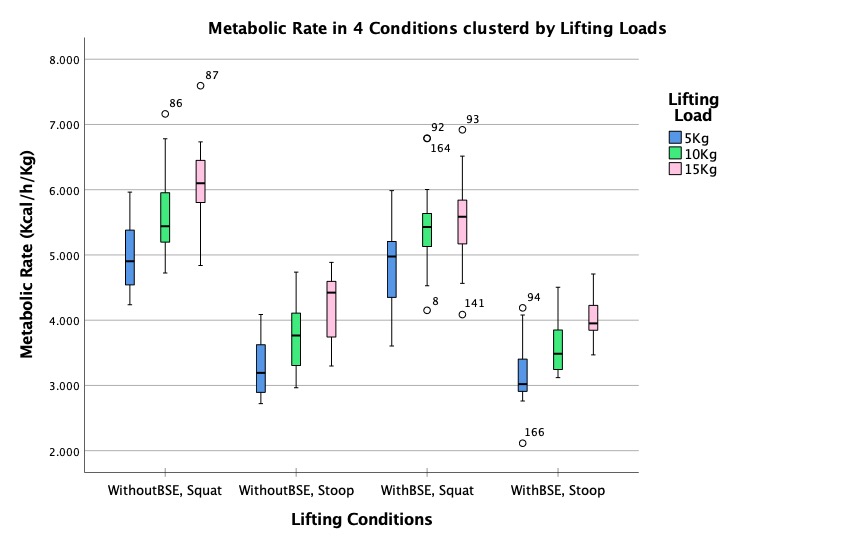
The Effect of LL on MRKg (Metabolic Rate per Kg)
Condition A (Without BSE, Squat), Condition B (Without BSE, Stoop), Condition C (With BSE, Squat) and Condition D (With BSE, Stoop). The result showed significant differences in MRKg for different Levels of LL across all 4 Conditions (Condition A: p<0.01, Condition B: p<0.01, Condition C: p=0.09, Condition D: p<0.01). The MRKg increases significantly with increasing lifting load in each Condition.
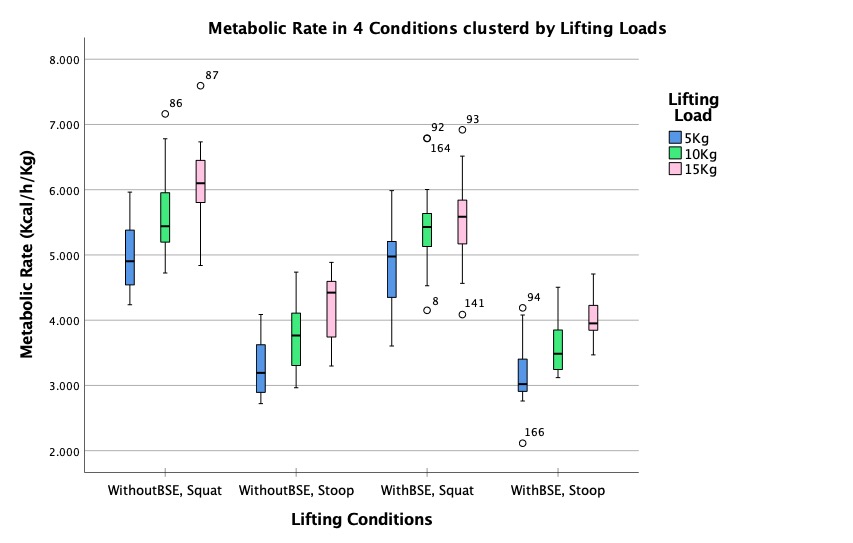
The Effect of LT on MRKg (Metabolic Rate per Kg)
The results showed that the choice of LT had a significant effect on MRKg while with BSE (5Kg, p<0.01; 10Kg, p<0.01; 15Kg, p<0.01) as well as while without BSE (5Kg, p<0.01; 10Kg, p<0.01; 15Kg, p<0.01). The MRKg of Squat Lifting always significantly and greatly exceeds the MRKg of Stoop Lifting.
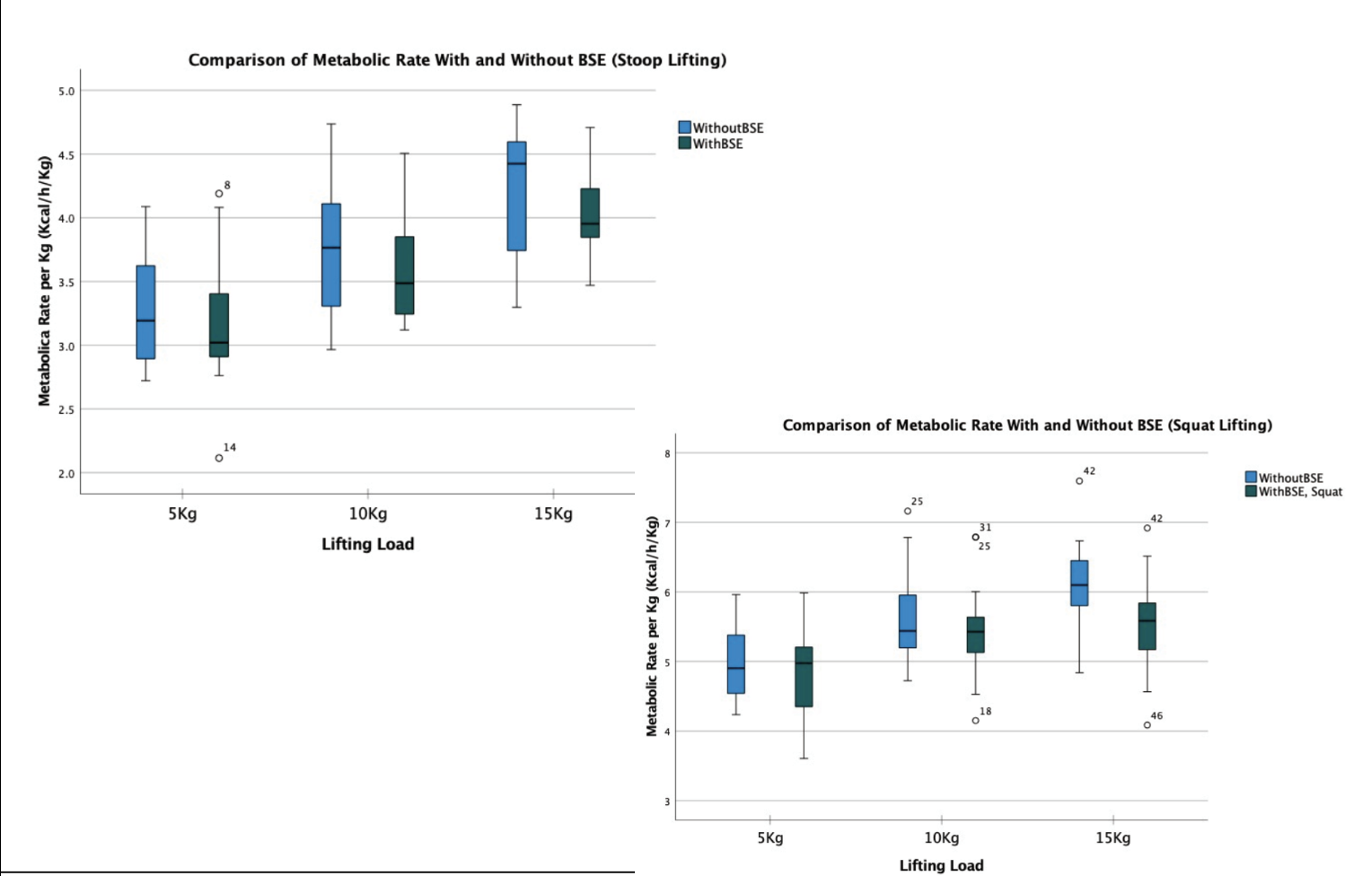
The Effect of LL on MRKg (Metabolic Rate per Kg)
In the condition where LT was Stoop lifting, there was no significant difference in MRKg at 5Kg (p=0.266), 10Kg (p=0.124) and 15Kg (p=0.113) between wearing BSE and not wearing BSE. Under the condition that LT is Squat lifting, the use of BSE has a significant effect on the MRKg when the lifting load is 10Kg (p=0.033) and 15Kg (p<0.001), respectively reducing the MRKg by 3.91% and 9.72%.
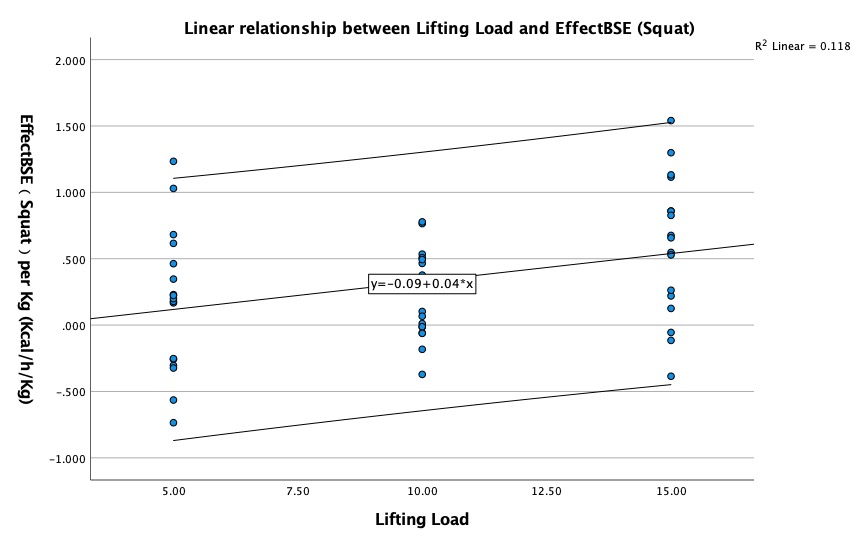
The Correlation of EffectBSE and LL
In the case of stoop lifting, there was no significant correlation between LL and EffectBSE (Stoop) (r=0.021, p=0.884). In the case of squat lifting, the results showed a significant positive correlation between LL and EffectBSE (Squat) (r=0.343, p=0.014, a=0.05). As LL increased, the effect of BSE on lowering MRKg of the squat increased. A linear regression analysis of LL and EffectBSE (Squat) was performed to obtain a linear relationship between LL and EffectBSE (y = -0.092*x +0.042, y = EffectBSE (Squat) (Kcal/h/Kg), x = Lifting Load (Kg)).
The effect of BSE on MRkg needs to be discussed in separate cases. In Squat lifting condition, BSE reduced MRKg by 3.46% (5Kg, p=0.204), 3.91% (10Kg, p=0.033), 9.72% (15Kg, p<0.001), respectively. EffectBSE showed a significant positive correlation with LL in the range of 5-15Kg.
Experience
Company: Beijing Isar Interface Design Co., Ltd. Guangzhou Branch, User Researcher
IDEO * McDonald’s green tray design, Team Leader
Visionary Thinkers
Visionary Creators
Visionary Makers